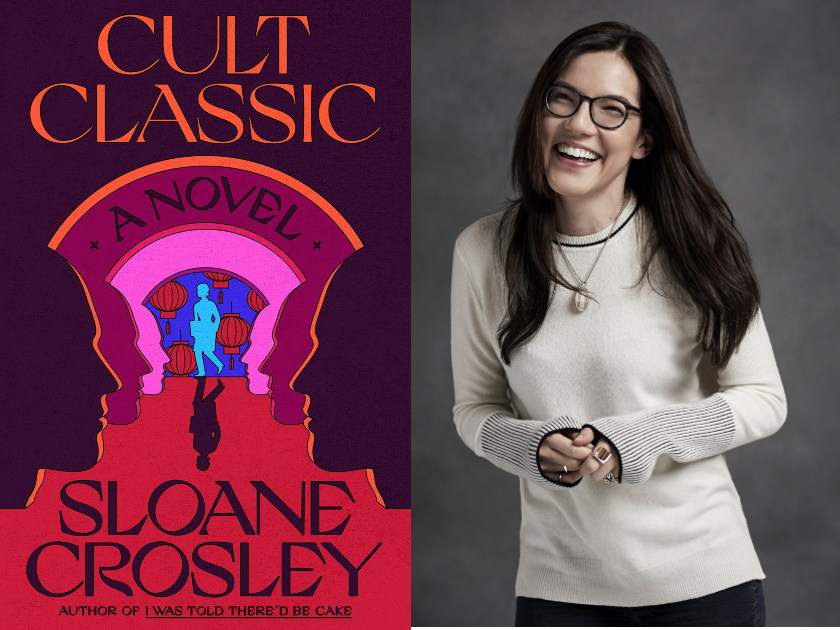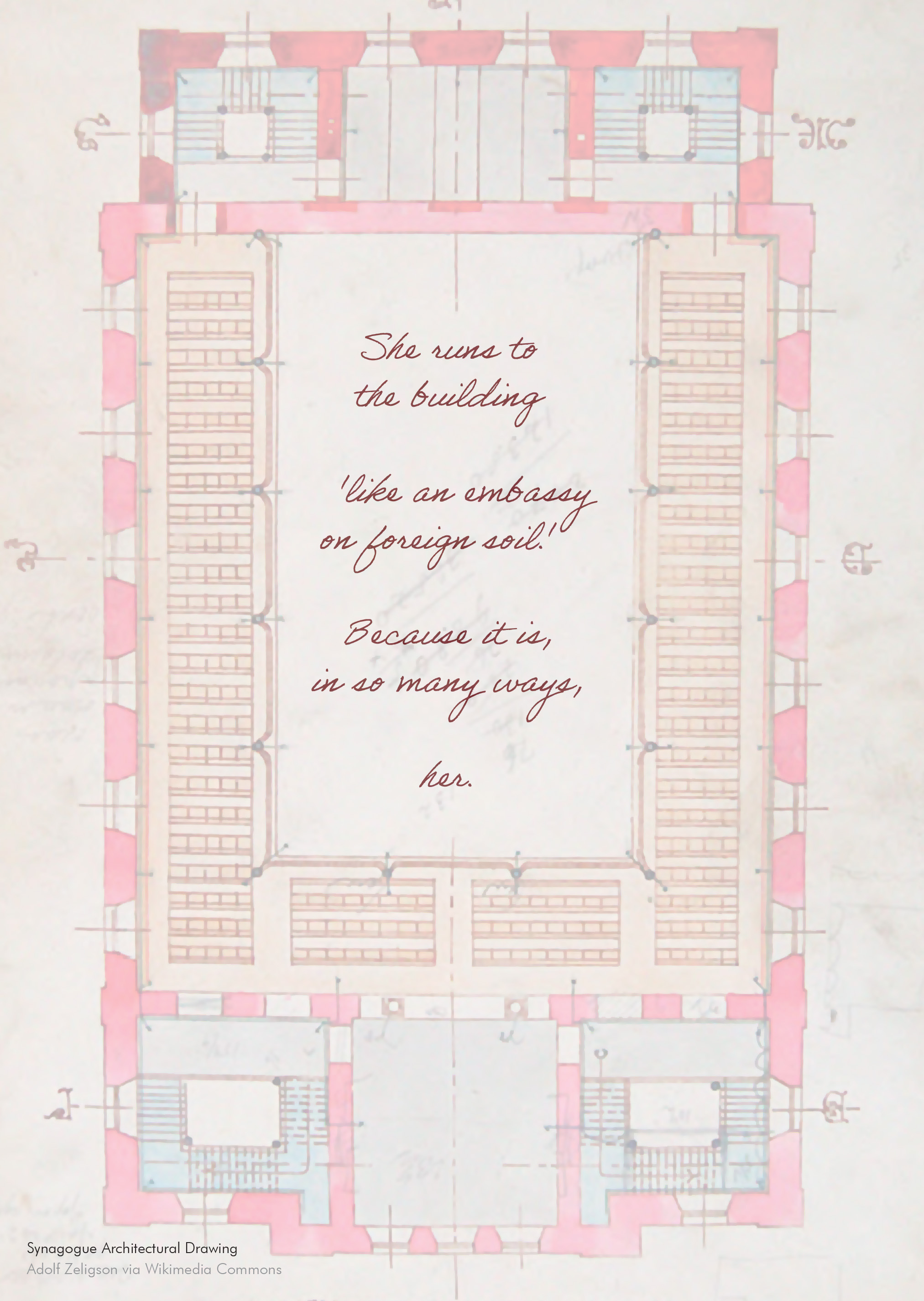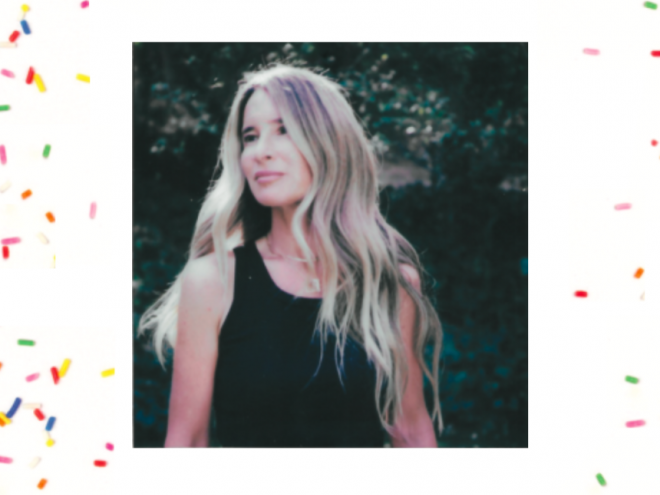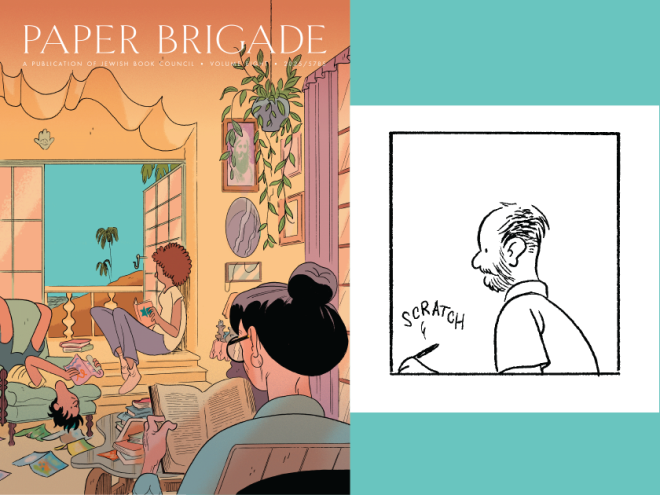
Author Photo by Ungano Agriodimas
In Sloane Crosley’s latest novel, Cult Classic, Lola, a New Yorker in her thirties, begins to encounter a different ex-boyfriend every time she’s in a certain area of Chinatown. Soon she realizes that this is by design—she and the men are brought together by a force emanating from a building nearby. Once an ornate synagogue, the building has fallen into disrepair: “All the windows were boarded up except for a stained-glass Star of David in the center, with some of the panes missing. The lower part of the façade was decorated in graffiti, the top in pigeon shit, as if both species had come to an arrangement.” And it is now home to a cultlike organization run by Lola’s former boss.
In the following conversation, Crosley delves into the significance of the deconsecrated synagogue at the core of her wittily observed and ever-surprising book.
Becca Kantor: At first glance, the exterior of the former synagogue looks almost anachronistic to Lola — it’s an architectural relic sandwiched “uncomfortabl[y]” between two modern buildings. How does the structure reflect Lola’s feelings about dealing with her personal history?
Sloane Crosley: She describes the synagogue as looking as if it came second, almost as if the modern buildings have allowed it to exist by their good graces. That is what a lot of the synagogues in Manhattan look like to me. They almost appear to be fighting off encroachment. Wedged in. And this is so much of who Lola is as well, someone who is made to feel claustrophobic in her relationships (or who brings that feeling upon herself). There’s also that “who came first” confusion for her. She has become so overwhelmed with the idea of alternate paths and choices in her romantic life that she’s lost her center. What parts of her personality are structurally sound and what parts are in dire need of repair? The first time she’s led to the building, she doesn’t want to go in. She doesn’t want to confront the secrets of this place. But as the book goes on, she runs to it “like an embassy on foreign soil.” Because it is, in so many ways, her.
BK: Did you have real-life inspirations for the building?
SC: Yes, there are one or two Lower East Side shuls that inspired it. One in particular has been owned and occupied by the same man since the early 1970s. I don’t know what the inside looks like because he’s understandably finicky about giving tours of his home to strangers. I did speak to him once. He used to get mugged on a weekly basis; he repairs the place himself — I think he’s sorta earned the right to not open up his home to gawkers, including writers. Especially writers. But I know he’s converted much of it into an art studio space of sorts. So I imagine we’re dealing with a pew-free zone, like in the novel. But I like to think there are little touches of the past, perhaps some angled holes in doorways where mezuzahs once hung.

BK: Is there a connection between Lola’s Jewish background and the fact that the cult is housed in a former synagogue?
SC: A friend in California who works for a Jewish organization read the book. When we discussed it on Zoom, I could see her eyes bulge as she said, “You are working through some stuff, even if you don’t know it.” There’s so much about spirituality and mysticism and morality and sacrilege in the book, plus some Jewish imagery, and I think there’s something unconscious about how I employed these themes — I didn’t really see it until the end. What I did see were the jokes, particularly a scene with one of Lola’s ex-boyfriends who could not unhook his jaws from a string of bad Holocaust jokes. But honestly, it never occurred to me to set the novel in any other kind of building. As much as I feel guilty about not being an observant or educated enough Jew, I am observant of that guilt. I know it well.
BK: The synagogue’s location — at the crossroads of the Lower East Side and Chinatown, next door to a bodega — evokes a specific New York landscape. Do you feel there is a quintessential “New York” quality to Lola’s situation or to Cult Classic overall?
SC: I am someone who’s generally known as a “New York writer,” but I push back against that when I can. Internalizing that stuff can become a problem — there’s the danger of walking around with this solipsistic “only in New York” attitude, as if, for example, no one ever runs into their exes in Kansas City. It starts as a kind of pride-of-place but it can get dark. And turn a person into a bad writer.
Having said all that, the Lower East Side is one of those neighborhoods that just aren’t transferable. My grandmother lived on Orchard Street in the 1950s, so I feel an extra connection to it. Perhaps the most salient example of this “quintessential” quality in the novel is the scene when Lola first enters the shul. As the door shuts behind her, before everything goes black, she sees a couple of people across the street trying to see where she’s going. Like, “Why are you allowed in there and I’m not?” It’s a combination of FOMO, anger, and real estate envy. No one experiences that like the people who live on this island.
Becca Kantor is the editorial director of Jewish Book Council and its annual print literary journal, Paper Brigade. She received a BA in English from the University of Pennsylvania and an MA in creative writing from the University of East Anglia. Becca was awarded a Fulbright fellowship to spend a year in Estonia writing and studying the country’s Jewish history. She lives in Brooklyn.



